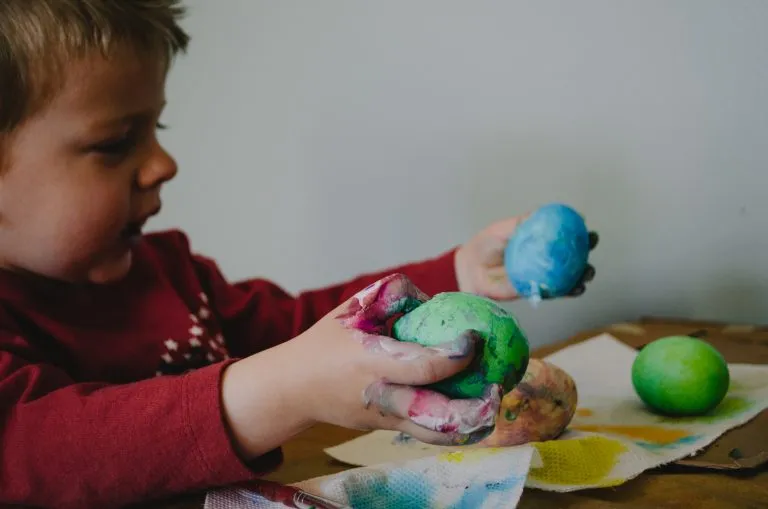Why "Mess is Best"
Babies and toddlers make sense of their world with the information they receive through their five senses. They understand things by what they see, hear, smell, taste and touch which is why sensory play is so crucial for healthy development. Sensory play tends to be a little messy which is why you might need some encouragement before you’d be willing to let your baby or toddler stick their hands in a bowl of goop. Here are 5 reasons why you should say yes to the mess:
Brain benefits
During sensory play neural connections (grey matter) are made for learning, critical thinking, creativity and imagination. The brain begins to understand new cause-and-effect relationships with new materials, and problem-solving skills are developed as new challenges are presented during playtime. The simple act of filling a bucket introduces basic mathematical concepts. They begin to understand size, shape, measuring, counting and sorting through sensory play.
Emotional and social benefits
The feeling of having sand or water run through your fingers is very calming and can be soothing for anxious children. They are able to learn self-control as the calming experience allows them to organise their thoughts and manage their feelings. They are given the chance to learn about responsibility and consequences for their actions as they are able to see the mess that is made, and how they can help to tidy up when playtime is over. Their self-esteem and independence is built up as they are given the chance to make their own choices.
Fine motor benefits
Sensory play is a wonderful way to get some good exercise for little fingers. Not only is it important for dexterity but also for hand-eye coordination. This is important for learning things like how to tie shoelaces and do buttons, or for good pencil grip and handwriting.
Language benefits
Language is learned through the repetition of words. When playing with a new texture, a child learns new words to describe what they are seeing or feeling – sticky, squishy, cold, gritty, pointy, coarse or bumpy! The opportunity to learn new words comes when there is sensory play.
Fun!
Sensory play is always fun and provides opportunities for special memories to be made together.

Tips for Messy Play
Be prepared
Plan ahead before you bring out the sensory game. Think about where the best place will be – in the playroom? the garden? the kitchen? Think about how to protect important things from getting messy – e.g. putting a blanket or towel on the floor, covering the couch with a towel or wearing aprons. Think about how you will clean up once you are finished – will you need a bucket and water, a dust pan and broom, or just some wet wipes?
Quantity matters
You will have less mess to clean up if you give your child a cup of rice instead of a bucket of rice! Start out with smaller amounts to control the mess.
Getting Started
Now that you’re interested in doing some messy, sensory play, where do you start? Why not try this easy, tried and tested recipe below to make Flax Goo! You can order more tried and tested recipes and toys for sensory play from Nanny n Me.

Flax Goo Recipe
Ingredients:
3 cups of water
1 cup whole flax seeds (also known as linseed)
Optional: food colouring (please note that the food colouring may stain fingers and hands when playing with this goo)
Method 1: (makes a gloopy liquid)
- Pour water in a container and stir in the flax seeds. (If you are using food colouring be sure to mix it with the water).
- Place uncovered in the fridge for at least 12 hours or overnight
- Be sure to take the goo out of the fridge at least 30 minutes before playing with it
Method 2: (makes a gel-like goo)
- Put the water and seeds into a pot on the stove and allow it to boil, stirring often. You will know it is ready when it is a snot-like consistency
- Allow it to cool completely before playing with it.
Storage: Keep in a sealed container in the fridge. It will keep for a few days but be sure to check it for signs of spoilage before allowing your child to play with it.
Written by: Wendy Baston
